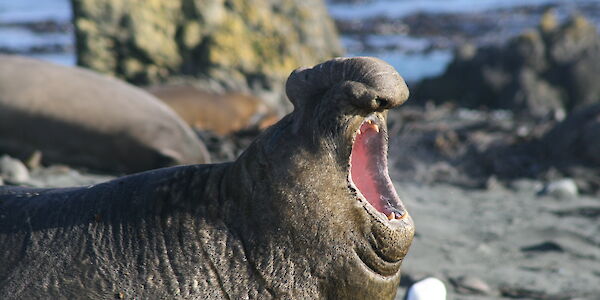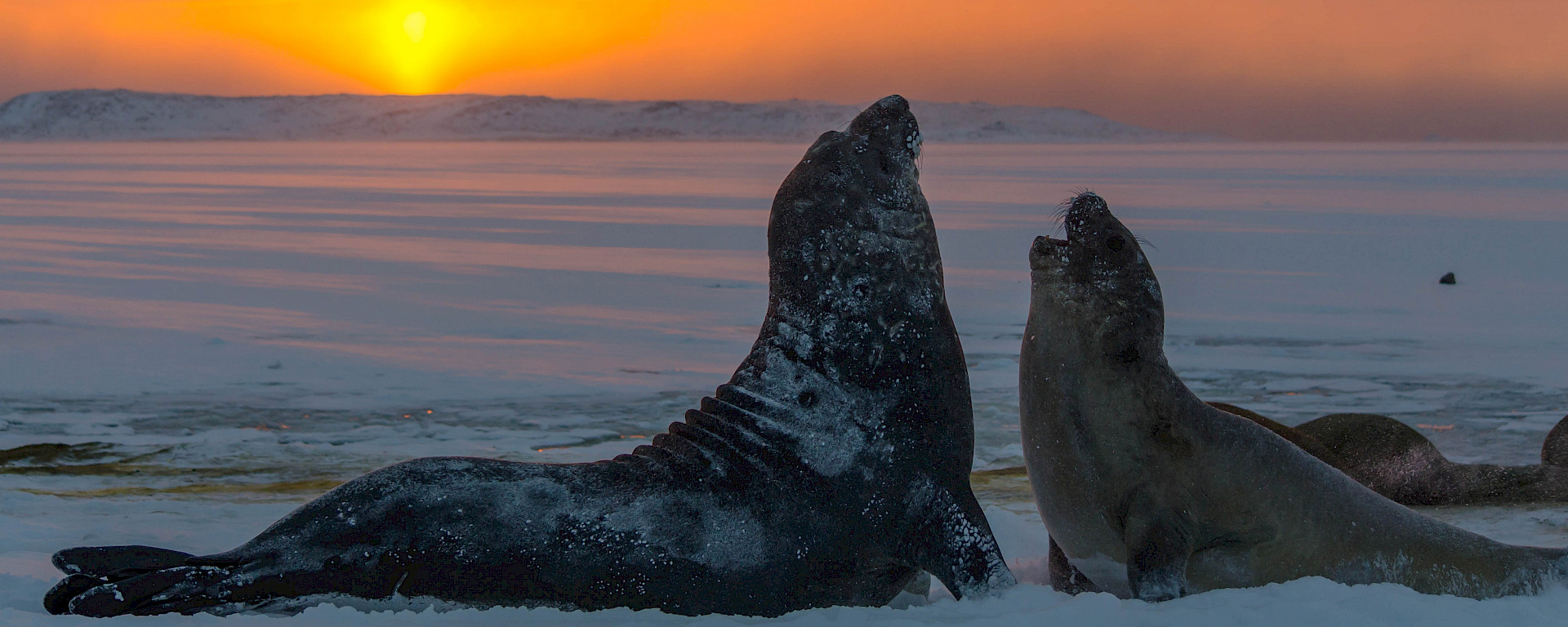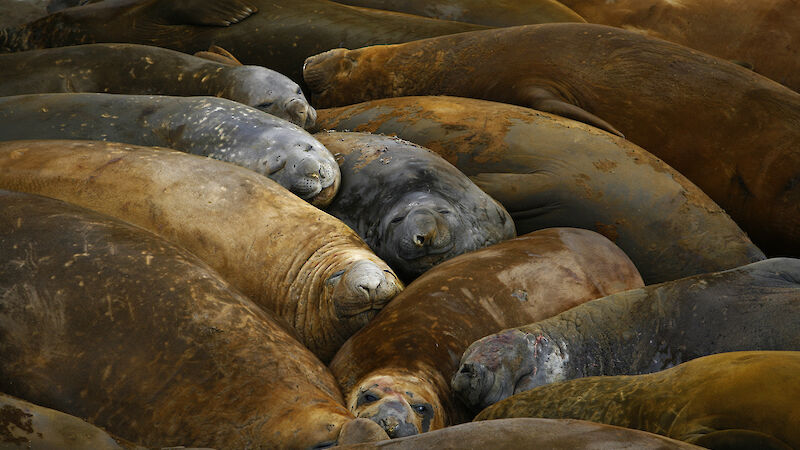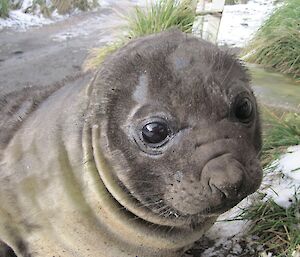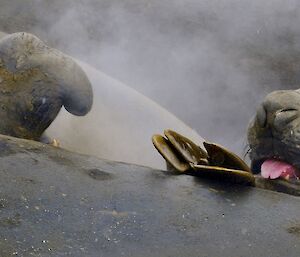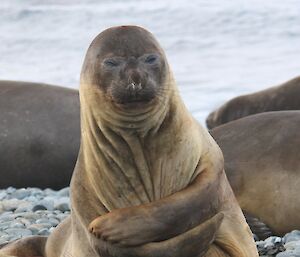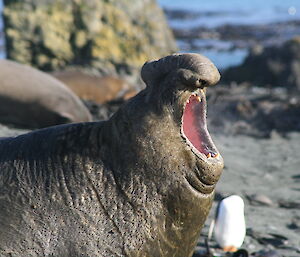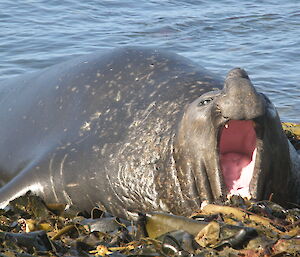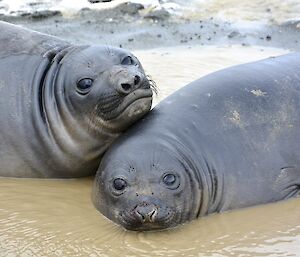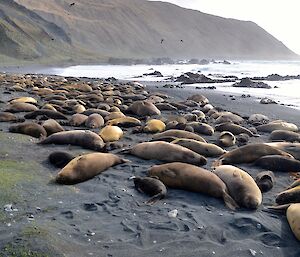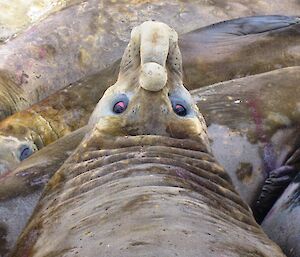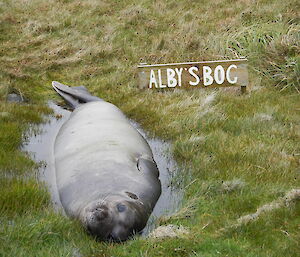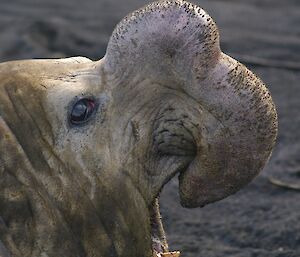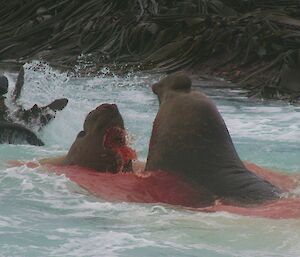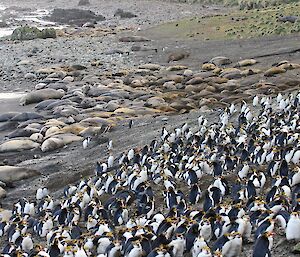Scientific name: Mirounga leonina
Physical description
Southern elephant seals are named after the large proboscis (nose) of the adult males, which is used to make loud roaring sounds, especially during the mating season.
They are large ocean-going mammals with adult males weighing up to 3,000 kg and adult females between 300 and 900 kg just prior to giving birth. Pups weigh about 40 kg at birth and are weaned after 24 days, by which time they weigh on average 120 kg. A large weaner may weigh in excess of 220 kg.
They are big and cumbersome on land, but are superb swimmers and divers. Biologists have recorded them diving up to 2 kilometres deep and holding their breath under water for up to 2 hours.
Special adaptations
Southern elephant seals can navigate very accurately to feed. They can dive to over 1,500 m and can stay submerged for up to 2 hours. Most dives are about 30 minutes in duration and to depths of between 300 m and 800 m. Southern elephant seals can dive constantly while at sea, spending about 2 minutes on the surface between dives. 'Elies' are able to accomplish these amazing diving feats because they have evolved some special adaptations to help them conserve energy.
Southern elephant seals have a torpedo shape, which accounts for their prowess in swimming and diving. Their enormous volume of blood stores oxygen, which they use very efficiently. They even have extra spaces called sinuses in their abdomens to store extra blood.
Haemoglobin in red blood cells carries oxygen, and elephant seals have a lot more red blood cells per unit of blood than other animals. Their red blood cells may, as an adaptation for diving, contain more haemoglobin than normal. These extra red blood cells make elephant seals’ blood very thick. Their muscles are also used to store oxygen. Molecules of oxygen-carrying myoglobin are present in the muscles and colour them black.
These adaptions mean that Southern elephant seals can take a breath and make the oxygen last for up to two hours.
Southern elephant seals have a thick layer of blubber that sustains them during the breeding season as they do not feed during this time.
Distribution and abundance
Southern elephant seals have a circumpolar distribution and visit sub-Antarctic islands to breed (September to November) and to moult their hair and skin (January to April). There are four main stock groups: South Georgia, Peninsula Valdez, Iles Kerguelen and Heard Island, and Macquarie Island.
Four distinct populations have been identified in the Southern Ocean. These populations are near Argentina (Peninsula Valdés and the Falkland Islands), in the Atlantic sector (South Georgia, South Orkney Islands, South Shetland Islands, Bouvetøya and Gough Island), in the Indian sector (Iles Kerguelen, Iles Crozet, Heard Island and the Prince Edward Islands) and in the Pacific sector (Macquarie Island, Campbell Island and Antipodes Island).
During the 19th to the early 20th centuries, following the decimation of the fur seal population, the sealing industry on sub-Antarctic islands turned to the exploitation of southern elephant seals as a source of oil. Many populations were nearly exterminated through these activities.
Today, the reasons for a decreasing population in some locations but not others, is not entirely clear. However, adult female and pup survival rates are related to food availability. Overall, population change over the past few decades is considered to be stable or increasing.
Conservation status: least concern
Southern elephant seals cruise the whole Southern Ocean and can swim enormous distances. Australian scientists have tracked individuals on sub-Antarctic islands that have later visited Davis and Casey stations in Antarctica.
Breeding
Southern elephant seals breed in dense colonies on beaches in spring (late September to early November). Males (bulls) maintain harems of females (cows). During the breeding period, competition for the harems is so intense that the bulls will not leave their territory to find food. Instead, they rely on blubber reserves.
Females give birth to a single pup which is weaned 3–4 weeks after birth. During this time, the female spends the entire time on the beach with the pup. Shortly before the pup is weaned, the female becomes fertile and mates with the dominant bull (called the beachmaster).
Diet and feeding
After breeding or moulting, southern elephant seals migrate south to Antarctica to feed on squid and fish at the edge of the sea-ice.
They travel long distances to their foraging areas. Males forage mainly on the Antarctic continental shelf. Females forage in more pelagic (open sea) areas, such as off the Antarctic shelf within the pack ice, or near the Antarctic Polar Frontal Zone. Foraging areas can be several thousand kilometres away from their breeding islands.
